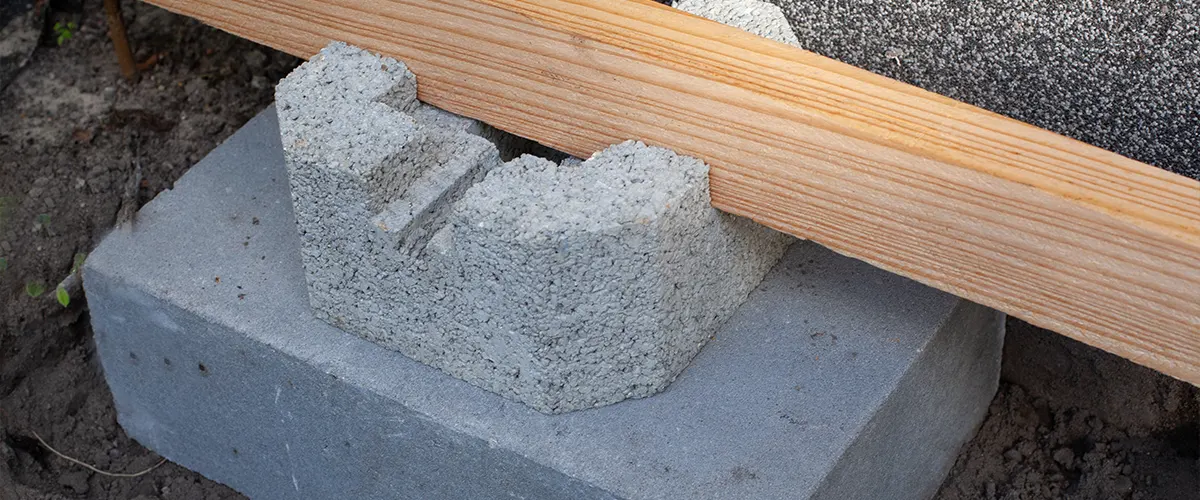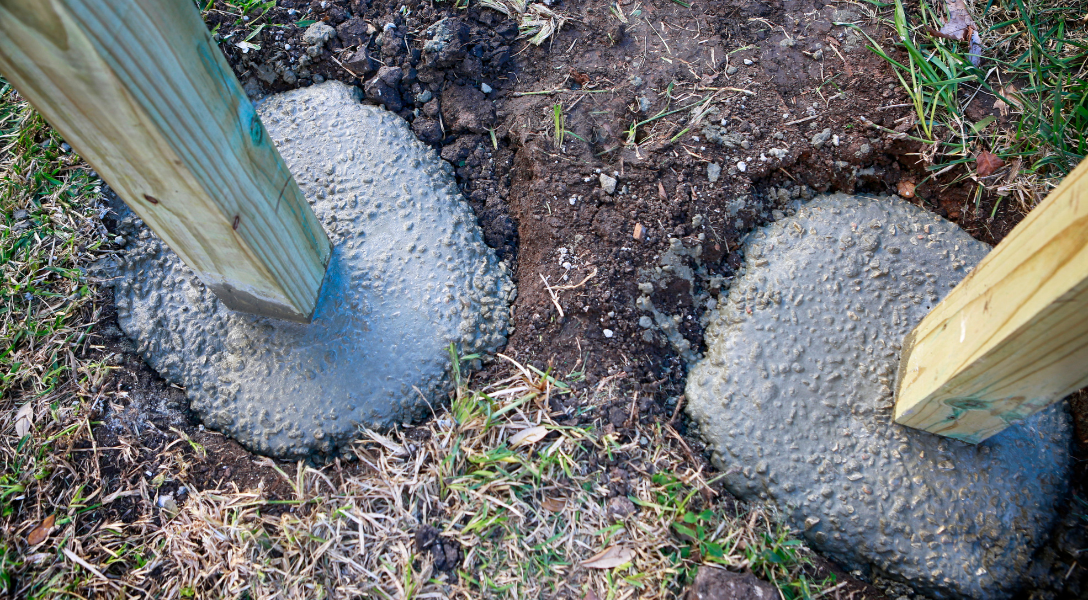Picking the Right Deck Footings for Stability and Sturdiness
The longevity and security of your deck depend greatly on the type of footings you choose, as they provide the necessary support and stability to withstand the test of time. In this conversation, we will discover the various kinds of deck grounds, think about the vital elements to consider when making a choice, and delve into the pros and cons of various alternatives.
Sorts Of Deck Footings
There are a number of kinds of deck grounds that can be used, each offering distinct benefits and factors to consider. One common sort of footing is the concrete pier footing. These grounds are composed of a cylindrical hole loaded with concrete, which provides a solid structure for the deck posts. Concrete pier footings are relatively easy to set up and use superb stability, making them a popular choice for numerous deck jobs.
Another type of footing is the helical pile footing. Helical piles are steel shafts with helical plates affixed to them. These grounds are set up by screwing them right into the ground, which develops a safe and secure structure for the deck. Helical stack footings are perfect for areas with tough dirt conditions, as they can be installed in almost any kind of kind of soil. If needed., they also permit for simple modification and progressing of the deck.
Additionally, some home builders choose for precast concrete footings. These grounds are made of sturdy concrete and can be found in various forms and sizes to accommodate various deck designs. Precast concrete grounds are practical to install and give a steady base for the deck framework.
Lastly, another alternative is the post-in-anchor footing system. This sort of ground involves driving a steel support right into the ground and attaching it to the deck blog post. It supplies versatility in terms of placing the deck articles and is suitable for decks with lightweight frameworks.
When choosing the ideal type of deck footing, it is important to take into consideration elements such as dirt problems, deck load, and regional building regulations (Deck Footings). Consulting with a professional service provider or structural engineer can aid ensure the proper ground is chosen for a stable and risk-free deck
Aspects to Consider When Selecting Grounds
When picking the appropriate footings for a deck, it is vital to carefully think about numerous variables such as soil conditions, deck load, and adherence to regional structure codes. These variables play a significant role in guaranteeing the security and longevity of the deck structure.
One of the primary elements to think about is the dirt problems. The sort of dirt on which the deck will certainly be constructed determines the type of grounds required. As an example, decks built on loosened or sandy dirts might call for much deeper grounds to supply appropriate assistance and stop settling. On the various other hand, decks improved clay or extensive soils might call for grounds that can fit the soil's tendency to increase and agreement.
Another vital variable is the deck tons. The weight of the deck, including the materials made use of and any kind of prospective live lots such as furnishings or gatherings, have to be considered when selecting grounds. The footings have to be created to bear the weight of the deck and disperse it uniformly to avoid any architectural issues or failings.
Finally, adherence to local building regulations is paramount. Structure codes vary from region to area, and it is important to follow the particular needs established by the local authorities. Deck Footings. These codes make certain that the deck is developed securely and fulfills the required criteria for structural honesty and load-bearing capability
Concrete Grounds: Cons and pros

Concrete grounds supply several benefits and negative aspects when utilized as the structure for a deck. On the silver lining, concrete footings offer excellent security and resilience. Concrete is a inflexible and solid material that can support heavy tons and stand up to various weather. It also has a lengthy lifespan, making it a find out here reliable choice for long-lasting use.
Another benefit of concrete grounds is their convenience. They can be put into different shapes and dimensions to suit various deck styles and configurations. Concrete footings can be customized to fit the details demands and requirements of the deck framework.
Nonetheless, there are likewise some drawbacks to utilizing concrete grounds. One major downside is the price and labor associated with their setup. Concrete footings call for excavation and typically need the help of hefty equipment. This can boost the total price of the deck job and may call for professional help.

Helical Piers Vs. Sonotubes: Which Is Better?
In taking into consideration the structure alternatives for a deck, the contrast between helical piers and sonotubes is important in establishing the premium selection. Helical piers, also called screw piles, are steel shafts with helical plates connected to them. They are twisted into the ground making use of hydraulic machinery, supplying a secure and durable structure for the deck. On the various other hand, sonotubes are cylindrical forms made of cardboard or fiber material that are loaded with concrete. They are positioned in a hole dug into the ground and supply assistance for the deck.
When it pertains to security and sturdiness, helical piers have the top hand. The helical plates on the piers produce a solid grasp with the dirt, protecting against any movement or changing of the deck. This is especially advantageous in locations with unpredictable or changing soil conditions. Sonotubes, on the other hand, depend entirely on the concrete filling up for security, which might not use the same degree of strength and resistance.
In regards to installment, helical piers are fairly simpler and faster to install compared to sonotubes. The hydraulic machinery utilized to twist the piers into the ground guarantees a fast and reliable procedure. Sonotubes, on the various other hand, call for excavating holes and putting concrete, which can be labor-intensive and taxing.
In addition, helical piers are a more functional option. If required, they can be made use of in numerous dirt problems and can be readjusted or enhanced. Sonotubes, on the various other hand, may call for added assistance, such as rebar, in specific soil problems or areas with high tons needs.
Picking the Right Footings for Your Deck's Measurements
For ideal architectural stability, it is vital to meticulously select the ideal grounds that straighten with the measurements of your deck. The measurements of your deck, including its length, elevation, and width, play a considerable duty in establishing the kind and size of grounds needed.
When choosing grounds for your deck, it is necessary to think about the load-bearing ability of the dirt. The weight of the deck, integrated with the weight of any type of furnishings or individuals on it, applies a substantial pressure on the grounds (Deck Footings). Consequently, it is vital to choose footings that can sufficiently sustain this weight without changing or sinking with time.
Larger decks with better dimensions require larger grounds to offer adequate security and support. The shape of the go to my site footings, whether they are site link rounded or square, depends on the style and design of the deck.
Final Thought
Finally, choosing the right deck grounds is essential for making certain security and sturdiness. Factors such as the type of footings, the deck's dimensions, and the benefits and drawbacks of various alternatives must be taken into consideration. Concrete grounds offer strength and long life, but may be extra expensive and lengthy to mount. Helical piers and sonotubes have their own advantages and drawbacks. Inevitably, picking the proper grounds for your deck's certain demands is important for a long-lasting and effective framework.
These footings consist of a cylindrical opening filled with concrete, which gives a strong structure for the deck messages. Concrete pier grounds are reasonably very easy to mount and provide outstanding security, making them a popular selection for lots of deck tasks.
Precast concrete footings are convenient to mount and supply a stable base for the deck framework.
It provides adaptability in terms of placing the deck blog posts and is suitable for decks with lightweight structures.
Concrete footings offer a number of benefits and drawbacks when made use of as the structure for a deck.
Comments on “Deck Footings Introduced: Recognizing the Trick Elements of a Dependable Deck Structure”